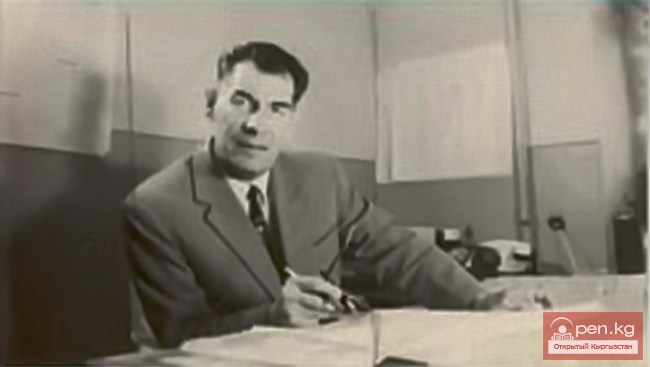Lost Cities.
Palmyra in Syria
Palmyra – once an important strategic site in the Syrian desert, a stopover point where caravans rested to gather strength before continuing their journey. It was considered the most famous ancient city, transforming from an oasis into a powerful state and attempting to rival the Roman Empire. The Romans emerged victorious, destroying Palmyra. Today, the remaining ruins give an idea of its splendor and grandeur during its prosperous era. The city was of incredible beauty, surrounded by legends and celebrated in odes. The remnants of this former civilization can be seen in modern Syria, where the fragments of temples and columns protruding from the sand are carefully protected by UNESCO.
Merv, Turkmenistan
The city of Merv is one of the ancient cities of Central Asia in Turkmenistan, the capital of the Seljuks. A number of architectural masterpieces from ancient Merv have survived, surrounded by legends.
The Merv oasis (40 km from the city of Mary) is one of the oldest regions of Central Asia, the first to master irrigation. Therefore, it is not surprising that one of the largest cities of the ancient world – Merv (Margush, Margiana, Maru) – arose here. The origins of Merv are shrouded in mysteries; one thing is certain – the first written mentions of it appear in the Avestan chronicles around the 8th-6th centuries BC. Chroniclers did not hold back on vivid epithets, calling it "the soul of the king," "the mother of the cities of Khorasan," and finally, "the city upon which the Universe rests."
Here lived and created Omar Khayyam, As-Samani, Imamaddin-Isfahani, and other great thinkers of the Middle Ages.
In 1153, Merv was captured by nomadic Guzz Turks and brutally plundered. The ensuing lawlessness amidst feudal wars for control of Khorasan, which lasted several decades, interrupted construction activity. Only after becoming part of the Khwarezmshah state did the city manage to partially recover from the damage inflicted, but by 1221 it was completely devastated by the Mongols. Nearly 200 years later, during the Timurids, Merv was revived, but it could never reach its former level, not only due to frequent political upheavals but also natural factors. The climate became increasingly arid, pastures were depleted, the Murghab River shrank, arable land decreased, and people began to leave their settled areas.
Machu Picchu, Peru.
Machu Picchu (in Quechua, machu pikchu means "Old Mountain") is the mysterious city of the Incas, built in the mid-15th century in Peru. It is located about 100 km from the capital of the Inca Empire, the city of Cusco, in the mountains at an altitude of 2450 meters above sea level, and is so hidden in the Andes that Spanish colonizers could not reach it. According to legends, the ancient Incas considered this place, not the most suitable for building a city in modern Peru, a sacred center of the Earth and used it for communication with the gods.
In its heyday, the city housed only about 1200 people, and in 1532, for mysterious reasons, the inhabitants abandoned the city. After Machu Picchu was included in the UNESCO World Heritage List, it began to attract unprecedented interest from tourists.
Babylon, Iraq
First mentioned in the third millennium BC, as one of the cities of Ancient Mesopotamia, located in the historical region of Akkad, a political, economic, and cultural center of the ancient world, one of the largest cities in human history, "the first metropolis," a well-known symbol of Christian eschatology and modern culture. For an entire millennium, it was the true capital of the world. It was here that the legendary Hanging Gardens of Semiramis were located, and civilization began. The city was the capital of the Babylonian kingdom, the center of Alexander the Great's empire.
After the establishment of the Seleucid state in 312 BC, the decline of Babylon began. A mass exodus of residents occurred with the transfer of the capital to the city of Seleucia on the Tigris. In 126, the Parthians practically destroyed Babylon. Where once densely populated areas stood, now there were ruins; great Babylon was turning into a Parthian settlement. Life gradually dwindled, and the number of people who knew cuneiform and the Babylonian language decreased. By the dawn of the 2nd century AD, the city fell into decline, its inhabitants left, but even today, the ruins of opulence are visible.
Tikal, Guatemala
The ancient Mayan city of Tikal is located in modern Guatemala. According to researchers, it was founded in the 7th century BC, and at the height of its prosperity, its population reached 100-200 thousand people. Tikal (older names – Mutul or Yash-Mutul) was the capital of the Mutul kingdom. Between 200 and 900 AD, the city was part of the major centers of Mayan culture and dominated politically, economically, and militarily.
There is evidence that Tikal was conquered in the 4th century by the army of central Mexican Teotihuacan, led by the commander Siyah K’ak’. After the conquest and the enthronement of the Teotihuacan ruler, significant changes occurred in the city. Old monuments were destroyed, elite palaces were burned, and characters of new deities appeared everywhere.
The gradual decrease in population, the cessation of stone construction, and the creation of monumental sculptures from the late 7th century became signs of the crisis of classic Maya society.
"Tikal" translates from the Maya language as "the place where the voices of spirits are heard." For nine centuries, from the 10th to the mid-19th century, Tikal only heard the voices of spirits because there were no people there. They abandoned the city at the end of the 9th century. To this day, scientists cannot answer why they did this. Abandoned, Tikal became overgrown with jungle and turned into a ghost town.
Ani, Turkey
Ani was founded in 961 by the Armenian king Ashot III of the Bagratid dynasty, who fully appreciated the advantageous strategic position of this place at the crossroads of trade routes. At the height of its prosperity, the city of Ani was called the city of 1001 churches; it was the capital of the Ani kingdom. It was a large, populous metropolis with unique architecture. According to the testimony of the 13th-century Arab historian Sibṭ ibn al-Jawzi, before the city was devastated by the Turks in 1064, its population reached 1 million people, but modern historians are more modest in their estimates, citing about a quarter of a million residents.
The city rapidly developed for a century but then gradually fell into decline due to capture by the Byzantines and later the Seljuks. Then came the Mongols, who completely devastated the city, driving out all its former inhabitants. Additionally, in 1319 a strong earthquake occurred, followed by the invasion of Tamerlane.
Today, the ruins of this city are one of the most valuable cultural monuments.
Teotihuacan in Mexico
Teotihuacan appeared several centuries before our era, and its peak occurred in the 2nd to 6th centuries AD. After the eruption of the Shitle volcano, the inhabitants of Cuicuilco, the oldest city in the Valley of Mexico, abandoned it and moved to Teotihuacan, significantly increasing the settlement there (one of the most mysterious facts about this city is that scholars have been unable to determine what the people living there were called).
From the 3rd to the 6th century, it was one of the largest centers of trade and culture in the entire region, from which huge ruins remained a century later. One of the most intriguing mysteries of the City of the Gods is the question of why the inhabitants left Teotihuacan during its peak – in the 7th century AD. Many researchers are convinced that the residents left within a day, taking all their belongings.
Today in Teotihuacan, one can admire the mighty pyramids, the remnants of palaces, the vast plaza, and the well-ordered streets.
To be continued...
Beginning:Lost Cities. Part 1




















































